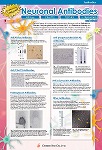Neurodegeneration Products Dashboard
Overview
In recent years, there has been a growing need for research into the pathophysiology of amyotrophic lateral sclerosis (ALS), a neurodegenerative disease, with the discovery of a series of new causative genes for the disease. It has been suggested that the aggregation and accumulation of specific proteins in neurodegenerative diseases cause neurotoxicity, which in turn leads to lesions. However, the mechanisms of pathogenesis and progression of these diseases are still unknown, and useful biomarkers are desired for neuropathological diagnosis, construction of experimental models, and discovery of therapeutic agents and development of treatment methods.
Cosmo Bio USA offers reagents that have proven helpful in the study of neurodegenerative disease research.

